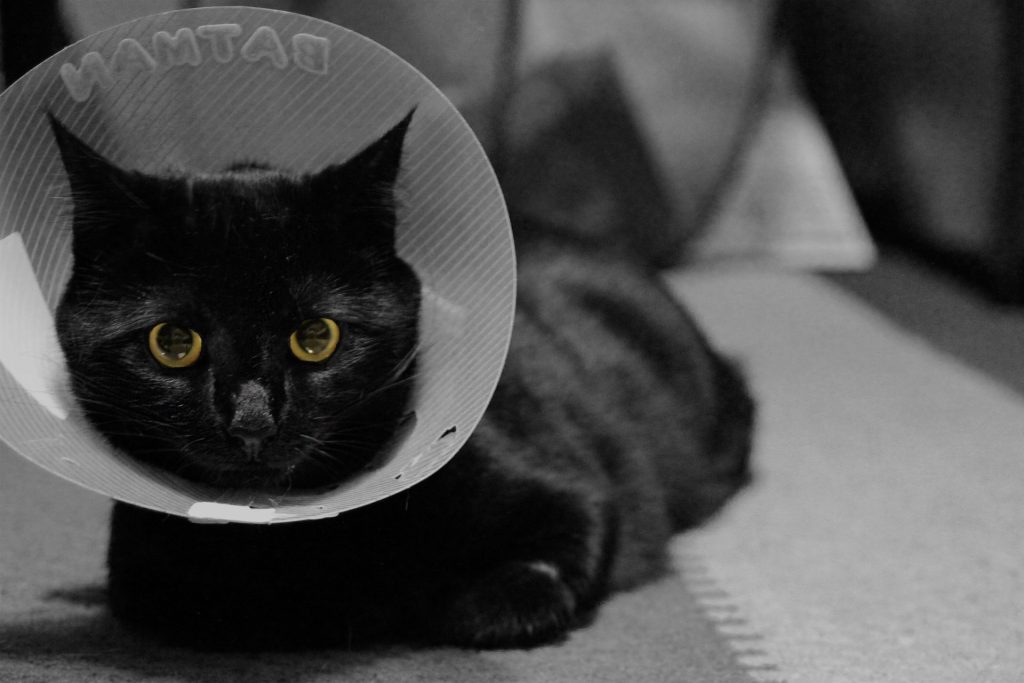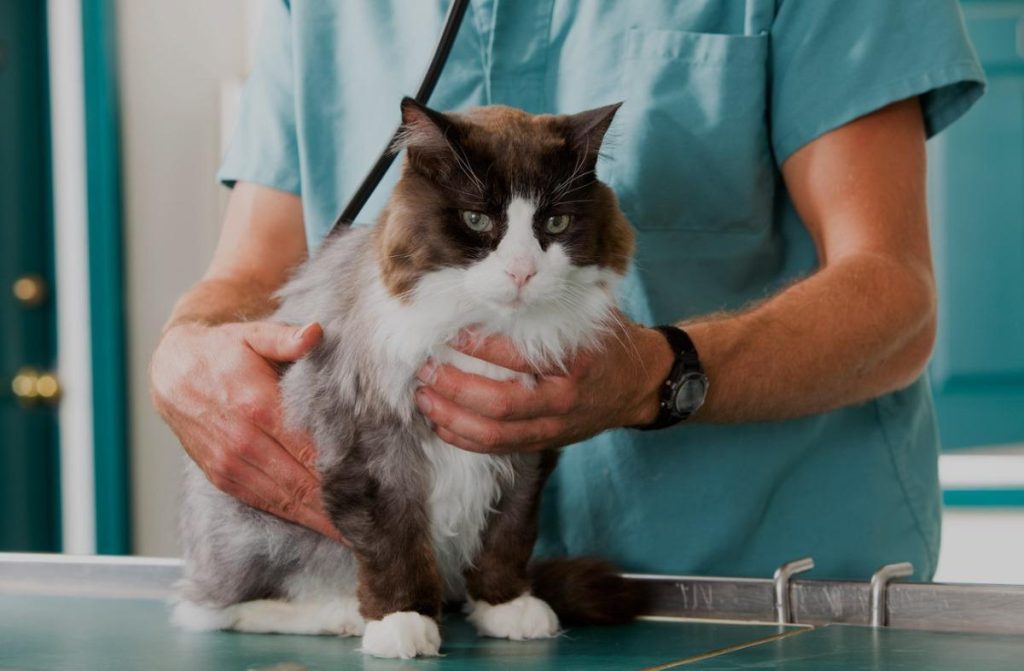Table of Contents
Neutering a cat is a responsible step that pet owners can take to prevent unwanted litters and promote a healthier life for their feline companions. The cost to neuter a cat can vary widely depending on several factors, including your location and your chosen veterinary practice.
Fully understanding the costs involved is essential to ensure your pet gets the best care. We invite you to continue reading as we explore the financial aspects of neutering, the health benefits, and the procedure itself. Discover how to prepare for your cat’s surgery and what to expect afterward. Delve into our comprehensive guide to make an informed decision about your cat’s health and well-being.
Understanding Cat Neutering
Understanding the basics of cat neutering is crucial for any responsible cat owner. When a male cat is neutered, his testicles are removed, a straightforward surgical procedure that usually leads to a quick recovery.
The process is slightly more complicated for female cats, involving the removal of the uterus and ovaries. Neutering prevents unwanted breeding and eliminates the risk of certain diseases. Choosing to neuter your cat is a significant step in ensuring its long-term health and happiness.
Exploring What Neutering Entails for Your Feline Friend
When it comes to neutering your feline friend, the surgical procedure involves the removal of reproductive organs in both male and female cats. In male cats, the procedure is relatively quick and consists of removing the testicles.
For female cats, spays and neuters are more involved, requiring entry into the abdomen to remove the uterus and ovaries. It’s a common practice among younger cats and is often performed by your favorite veterinarian at their veterinary practice. Neutering prevents unwanted litter and reduces the risk of your cat developing certain cancers and other health issues.
The Ideal Age to Have Your Cat Neutered
The American Society for the Prevention of Cruelty to Animals (ASPCA) recommends spaying and neutering pets as early as eight weeks old, depending on the individual cat’s health. For mobile spay and neuter clinics, pre-anesthetic bloodwork and monitoring with an IV catheter are standard protocols to ensure the safety and well-being of your pet during the procedure. Following the guidance of the society for the prevention of cruelty ensures that your cat is neutered at the ideal age, contributing to a healthier and potentially longer life.

The Financial Aspects of Neutering a Cat
The cost is one of the primary considerations when planning to neuter a cat. While the procedure is relatively standard, prices can vary depending on where you live and the specific services the veterinary clinic provides. Understanding the financial aspects is crucial for pet owners to prepare adequately for the expenses.
A Breakdown of Cat Neutering Costs
When assessing the cost of neutering a cat, several factors must be considered. Some insurance providers, like MetLife Pet Insurance, may offer coverage for neutering procedures as part of their wellness plans. Knowing what your insurance covers can help manage the costs associated with this important surgery.
US Regional Price Variations
Neutering costs can vary significantly across the United States. Factors influencing the price include regional living costs, the type of veterinary practice, and whether the clinic is a specialized spay and neuter facility. Pet owners should research local options to find the most cost-effective yet reliable services for their cat’s neutering procedure.
Comparing Spay and Neuter Procedures: Is There a Cost Difference?
There is often a cost difference between spaying a female cat and neutering a male cat. Spaying is generally more expensive due to the complexity of removing a female cat’s reproductive organs. However, many clinics and organizations offer financial assistance or low-cost options to encourage pet owners to spay or neuter their cats, which helps control the pet population and prevent health issues.
Factors Influencing the Cost of Neutering
Several factors, including the age and health of the cat, the type of clinic, and regional cost differences, can influence the cost of neutering. Some insurance providers, such as MetLife Pet Insurance, may cover some of the costs, making it a worthwhile option for budget-conscious pet owners to explore.
The Health and Behavioral Benefits of Neutering
Neutering a cat can lead to numerous health and behavioral benefits. The Humane Society of the United States and animal shelters nationwide advocate for spaying and neutering to help control the cat population. A cat spayed or neutered at an appropriate age is less likely to develop behavioral issues like urine spraying or exhibit a heat cycle. Moreover, neutering contributes to a healthier life, reducing the risk of diseases such as breast cancer and pyometra in female cats and cancer in cats overall.
Long-Term Health Advantages for Neutered Cats
The long-term health advantages for neutered cats are significant. Once a cat is neutered, the risk of diseases like prostate issues and testicular cancer is significantly reduced. Neutered cats also tend to live longer and healthier lives, especially if they are outdoor cats, as neutering decreases the inclination to roam and fight.
Behavioral Improvements Post-Neutering
Many owners report positive changes in behavior after a cat is neutered. Males are less likely to mark their territory with strong-smelling urine, and the urge to roam for mates decreases. This can lead to a calmer, more contented pet, which strengthens the bond between cats and their owners.
Payment Options and Financial Assistance
Payment options and financial assistance are available for those concerned about the cost of neutering a cat. Many animal welfare organizations offer low-cost or subsidized neutering procedures to ensure all pet owners can access this essential service. Additionally, some veterinarians may provide payment plans to help ease the financial burden on pet owners.
Strategies to Cover the Cost of Getting a Cat Neutered
Strategies are available to help cover the cost of getting a cat neutered. MetLife Pet Insurance and other providers may offer policies that include coverage for neutering procedures, reducing pet owners’ out-of-pocket expenses. Additionally, local animal shelters and rescue organizations often have programs or partnerships with veterinary clinics to provide lower-cost options.
Pet Insurance Insights – Does It Include Neutering?
When considering pet insurance, reviewing the policy details to determine if neutering is included is essential. MetLife Pet Insurance, for example, may offer coverage for neutering as part of their wellness benefits. Understanding what is covered can help pet owners make informed decisions about their pet’s healthcare and financial planning.
Low-Cost Neutering Programs and Free Services
For cat owners concerned about the expense of neutering, there are options to alleviate financial stress. Various organizations offer low-cost neutering programs and sometimes even free services, especially for female cats. These programs often partner with local veterinary practices to provide a surgical procedure that removes reproductive organs, reducing the risk of your cat developing specific health issues. Younger cats may benefit from early neutering, and finding a favorite veterinarian through these programs can ensure quality care at a reduced cost.
The Procedure Explained
Neutering a cat is a standard surgical procedure that involves removing a male cat’s testicles. This prevents him from fathering kittens and can reduce certain undesirable behaviors. The method is relatively quick and is performed under general anesthesia. Afterward, the cat will require a short period of recovery. Understanding what the procedure entails can help cat owners prepare for their pet’s surgery day.
What to Expect During and After Cat Neutering Surgery
When your cat undergoes neutering surgery, he will be placed under general anesthesia. The surgical area is then shaved and sterilized. A small incision is made to remove the testicles, and the incision is closed with sutures. After the surgery, cats typically recover quickly, returning to their usual selves within a few days. During this recovery phase, monitoring your cat for any signs of discomfort or complications is crucial.
Post-Operative Care for Your Neutered Cat
Post-operative care is essential for ensuring a smooth recovery after your cat is neutered. The American Society for the Prevention of Cruelty to Animals recommends keeping the cat in a quiet, confined space to prevent excessive movement that could disrupt healing. Watch the incision site for swelling or discharge, which could indicate infection. Pre-anesthetic bloodwork may be advised for older cats or those with health concerns to ensure they are fit for surgery. Proper care leads to quicker healing and less discomfort for your feline friend.

Addressing Common Concerns and Misconceptions
Many cat owners have concerns about neutering their pets, often due to common misconceptions. It’s essential to address these worries with accurate information, as neutering is a beneficial procedure for both the cat’s health and behavior. Understanding the facts can ease concerns and promote responsible pet ownership.
Debunking Myths About Neutering and Cat Health
One common myth is that neutering can negatively affect a cat’s health and vitality. However, MetLife Pet Insurance and veterinary professionals agree that neutering offers numerous health benefits. It can prevent unwanted litter, reduce the risk of certain cancers, and curtail behavioral issues. Neutering is a routine procedure, and most cats lead entire, active lives after recovery. It’s essential to rely on evidence-based information when considering this option for your pet.
Understanding the Minimal Risks of Neutering
While any surgical procedure carries some risk, neutering is considered a safe and routine operation, especially for female cats. Complications are rare and typically minor when they do occur. The benefits of neutering, such as a reduced risk of reproductive system diseases and certain types of cancer, far outweigh the minimal risks associated with the surgery.
Wrapping up the Neutering Discussion
As we conclude our comprehensive guide on neutering, it’s essential to recognize the significant role this procedure plays in a cat’s well-being. Neutering, which involves the removal of the reproductive organs, not only helps control the pet population but also contributes to a healthier and more harmonious life for your feline companion. While some pet owners might worry about the cost, understanding the long-term benefits can help you decide what is best for you and your cat.
Remember, neutering is more than a one-time veterinary expense; it’s an investment in your cat’s future. Just as regular flea treatments are part of routine cat care, neutering is a fundamental aspect of responsible pet ownership. By taking this step, you’re helping to prevent various health and behavioral issues, ensuring that your furry friend can lead a whole and contented life by your side.

Hi, I’m Zoey, a devoted mom to two charming Siamese cats. My passion lies in assisting fellow pet owners in providing optimal care for their cats. On CatsEuphoria, I share practical tips and relatable stories, inviting you to join me in appreciating the authentic bond between humans and our beloved feline companions.




